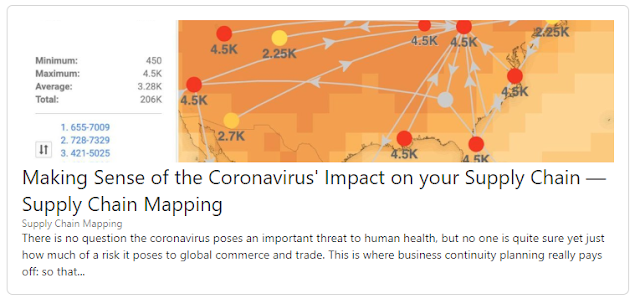Considering Capacity Cuts?
SYNOPSIS: When trying to rebalance cost structures in the face of business disruption or uncertain demand, it is important not to underestimate the role of capacity in revenue management or the potential impact of permanently removing capacity.
This article was republished on LinkedIn.
ESTIMATED READING TIME: 3.5 min
Waves of Disruption
As the economic tsunami (substantially caused by the Covid-19 pandemic) continues to pummel economies, many industries have had their hands forced by a combination of economic realities and or lockdown regulations. The disruption and economic fallout thus far have not been limited to a specific industry and it seems no, or preciously few, industries have been spared. Then there is the knock-on effect – the reverberations in one industry is felt in many others.
- According to the Restaurant Association of SA, nearly a third of SA restaurants had already shuttered since the onset of the lockdown[1], their best efforts to stay open notwithstanding. Comparatively, in the US, restaurant closures by July 2020 represented the highest total business closures in the country, surpassing retail [2].
- South African motor vehicle financing transactions (and possibly to an extent total vehicle sales) in Q2 is down by -71% compared to the number of new and used cars financed over the same period in 2019. In Europe, sales for the half-year reduced steeply by between -35% (Germany) to 51% (Spain)[3]. Russia is down -23%, Brazil -39% and Japan around -23%.
Adjusting to changing market conditions
As a result, business executives are forced to strategise, and where possible re-calibrate overheads and variable costs to right-size the cost base in the face of reduced demand or increased demand uncertainty (#NewNormal). Some common cost savings strategies deployed to date include:
- Retrenchments
- Salary cuts
- Reducing shifts
- Temporary factory shutdowns
- Reducing stock and reviewing re-order levels
It is becoming clear that some industries (notably capital-intensive industries) have been forced into taking a longer-term view, while others have already been dealt their cards and seriously handicapped by the fallout:
- To date, the container shipping industry has responded with an unprecedented high number of blank sailings (tactical sailing cancellations) - resulting in 10% of the global fleet sitting idle in May and June[6].
Owners are now looking at more serious measures to right-size capacity, resulting in shipping lines such as Hapag-Lloyd (5th biggest container shipper line in the world) announcing an indefinite postponement of an order for a new fleet of 23,000 TEU mega-ships [7].
This type of decision impacts industry capacity which, in turn, has a knock-on impact on e.g. ports and harbours - now resulting in planned port capacity expansion being curtailed by 40% over the next 5 years[8].
- The biggest cruise line operator in the world, Carnival Corporation, confirmed its plans to sell a total of 13 of its ships this year, in a bid to deal with the losses faced due to the COVID-19 pandemic [9].
- Due to Covid-19 factory lockdowns, commercial airline manufacturers such as Airbus and more notably Boeing, have fallen behind with deliveries of new airlines[10]. Boeing has also specifically been hit by customers cancelling orders in 2020, resulting in it bearing the brunt of 800 or more cancelled orders[11] to date.
Considering the Impact of Capacity Reduction
Why is Capacity Reduction a much more serious decision than e.g. reducing shifts or salary cuts? If we break it down (simplistically speaking):
Revenue is a function of Price x Units sold
Subject to the constraints of:
- Market demand,
- The Business Model,
- Internal Capacity and
- Productivity.
For capacity-driven operations, maximum revenue is thus limited by inter alia demand and capacity. It is difficult to increase demand, and even more unlikely for sales to exceed demand. Attempting to sell more than available capacity permits, or to sell more than productivity allows is not sustainable or feasible in the long run either. Optimising productivity to match capacity is also difficult.
However, once the capacity has been reduced, the supply curve moves left and maximum income potential shifts down. This means maximum income potential has been fixed at a permanently lower level unless a way can be found to significantly increase the following to sufficiently compensate for the loss of Capacity:
- Demand,
- Productivity and or
- Price
For industries and companies where capacity is a key driver of costs and revenue-generating ability, while any cutting back of capacity could yield significant savings, it could equally impact revenue management and (depending on costs structures) possibly even the ability to break-even. While it does not make financial sense to have unused capacity sitting idle for extended periods of time, cutting capacity is still not a decision to be taken lightly.
In some cases, notably the likes of Airbnb and Uber, they rely on in-sourced (crowd-sourced) capacity and they are not hamstrung by their infrastructure or capital. For more traditional companies, however, such as rental fleet operators, logistics companies, transport, manufacturers, warehouses, office buildings, hotels and recreation, a cut in capacity has more strategic and longer-term implications:
- Capacity influences the ability to retain or gain market share.
- Reduced capacity will have a more significant impact on the variability and certainty of revenue e.g. 1 out of 10 units becomes unavailable vs. if 1 out 5 units were unavailable.
- If participants in any industry start shedding capacity (equipment, buildings, vehicles etc) simultaneously, e.g. by selling it in the open market during a period of low demand, this can result in oversupply, prices will fall further and this can result in losses.
- If any hypothetical future economic improvement occurs or if demand increases there could be significant competition to regain capacity. This could result in long delays - meaning everybody will have to wait their turn and it could take years to get back to historic capacity levels.
- If suppliers of capacity have been significantly affected themselves (e.g. Boeing) and they are still catching up with the backlog or have had to scale down permanently, this could lead to significant cost increases, specifically in the event of a bidding or price war, until the market has self-corrected again.
- If capacity is sold and the cash is used to e.g. pay for day-to-day expenses or to service debt, it might influence the business's ability to expand capacity again in future.
When considering strategic alternatives and definitely before finalising any decisions, consider the following:
- Experiment with your digital twin or conduct financial and operational simulations to better understand the impact of proposed capacity cuts on both the business and bottom line.
- Consider possible alternatives such as outsourcing excess capacity, re-allocating capacity to different product lines, hybrid shared-capacities, licensing or shared operating agreements.
- Thoroughly assess market conditions, current demand, disposal costs and the probable range of net realisable values before you decide to sell.
- Evaluate and decide on a case-by-case or unit-by-unit basis.
How do you suggest dealing with the thorny issue of excess capacity? Please comment in the comment section below.
If you have found this article useful or thought-provoking, please share with others your company or industry.
[1][1] https://www.iol.co.za/business-report/opinion/facing-an-existential-crisis-the-restaurant-industry-starts-fighting-back-3734ccf4-09f1-45dd-b57f-ccce1f38dfcb
[2] https://www.barrons.com/news/pandemic-an-apocalypse-for-restaurants-in-us-01596340207
[3] https://www.spotlightmetal.com/international-automobile-markets-slumped-sharply-a-950697/
[4] https://www.news24.com/fin24/economy/factory-output-falls-by-the-most-on-record-in-april-20200709
[5] https://www.reuters.com/article/us-eurozone-economy-industrialoutput/euro-zone-industry-output-recovers-less-than-expected-idUSKCN24F0XI
[6] https://www.joc.com/maritime-news/container-lines/carriers-could-make-permanent-capacity-cuts-prolonged-downturn-drewry_20200714.html
[7] https://www.porttechnology.org/news/hapag-lloyd-postpones-mega-ship-order/
[8]https://splash247.com/pace-of-boxport-capacity-expansion-forecast-to-contract-at-least-40-in-the-wake-of-coronavirus/
[9] https://www.marineinsight.com/shipping-news/worlds-biggest-cruise-line-operator-to-sell-13-ships-to-cope-with-losses-due-to-covid-19-pandemic/
[10] https://www.statista.com/chart/19713/airbus-vs-boeing-deliveries/
[11] https://www.seattletimes.com/business/boeing-aerospace/boeing-has-lost-more-than-800-orders-for-the-737-max-this-year/



























